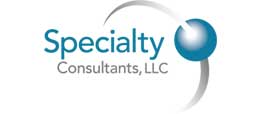Editor’s Note: The following statistics are from the recently released, 19th edition of “A Strategic Analysis of the U.S. Structural Pest Control Industry,” an annual market report created by Specialty Consultants, Jacksonville, Fla. A total of 800 owners or managers of pest control companies were surveyed for this study. The market report forecasts pest control service and pesticide product category sales through 2023.

LOGO: SPECIALTY CONSULTANTS LLC
The U.S. structural pest control industry is comprised of nearly 20,000 pest control firms. The professional pest control industry generated an estimated $8.971 billion in total service revenue in 2018, a 4.4 percent increase from the $8.597 billion measured in 2017. More than 80 percent of the residential pest control revenue came from services provided under annual contracts, with the remainder generated from one-time clean-out treatments.
Total revenue earned from controlling termites this past year equaled the level of revenue earned in 2005. “It’s taken the industry 13 years to reach the $1.76 billion measured at the height of the housing boom in 2005,” said SPC Partner Rich Kalik. “While the housing market is nowhere near as robust as it was in 2005, preventative post-construction treatments have expanded considerably in the last several years. This past year, respondents reported that nearly 36 percent of their post-construction termite jobs were conducted on structures where no termites were present. We’re forecasting that more than 1 million post-construction termite treatments will be made in 2019.”
Kalik noted that the amount of service revenue generated from controlling bed bugs has declined for the first time in five years, “and service revenue from controlling rats and mice plateaued following five years of robust growth.”
This year, the survey also asked about the concept of electronic rodent monitoring (ERM). More than half of the respondents said they had “heard of it, but didn’t know much about it.” While nearly 10 percent expected to adopt the technology in less than a year, a similar number said they thought it would be more than five years before their company adopted the technology.
The report’s business findings are similar to PMP’s own findings in its annual State of the Industry report, including:
• “Finding or keeping good employees” was identified as the greatest challenge by nearly 25 percent of respondents, followed by “weather” (13 percent) and “gaining new customers” (12.3 percent).
• More than 40 percent said they were most concerned with public policy at the state level, as opposed to local or federal policy. Of those that expressed public policy concerns, more than half mentioned “pesticide bans/restrictions” as the most important policy issue affecting their business, closely followed by “too much regulation on pesticide applicators.”
Leave A Comment